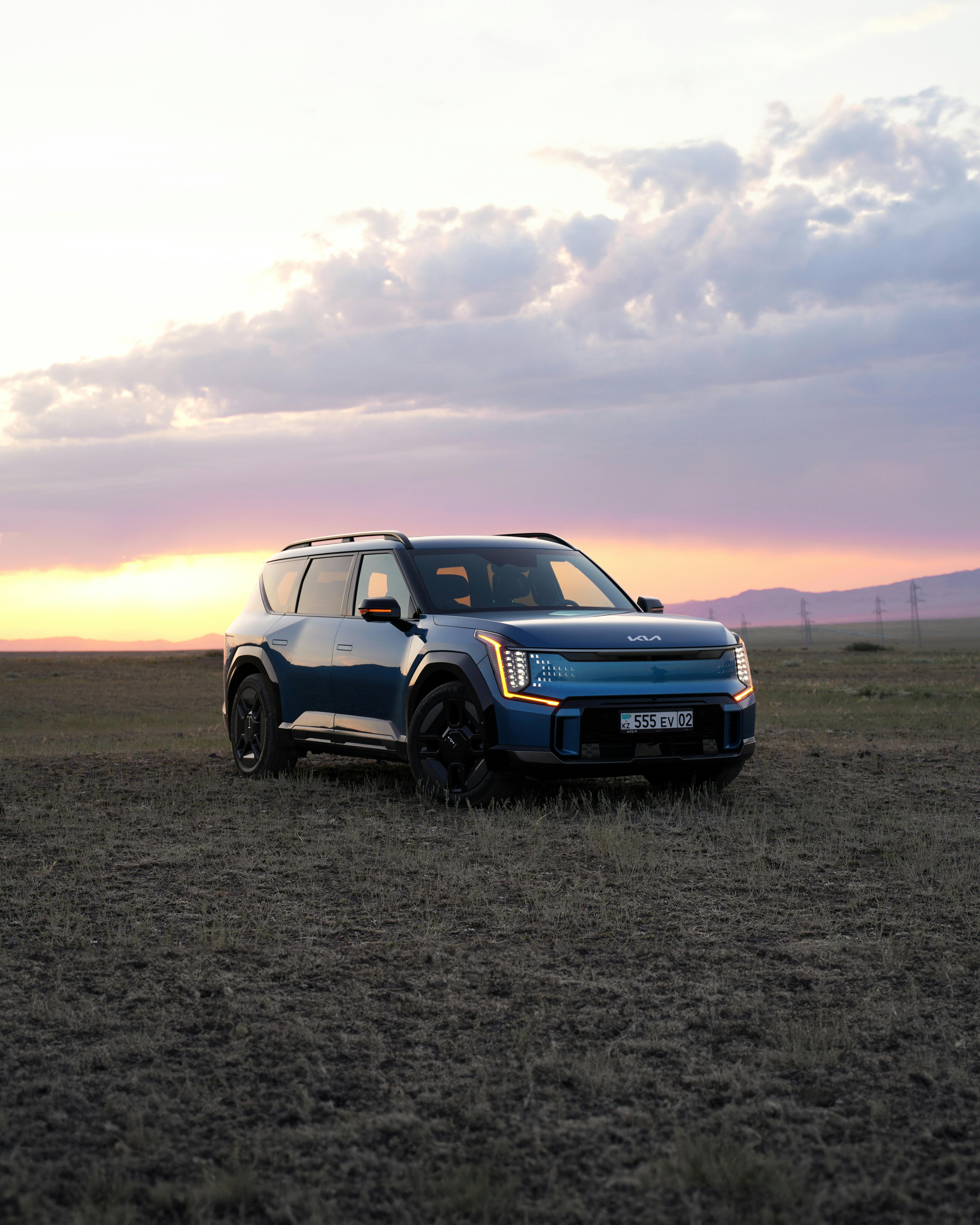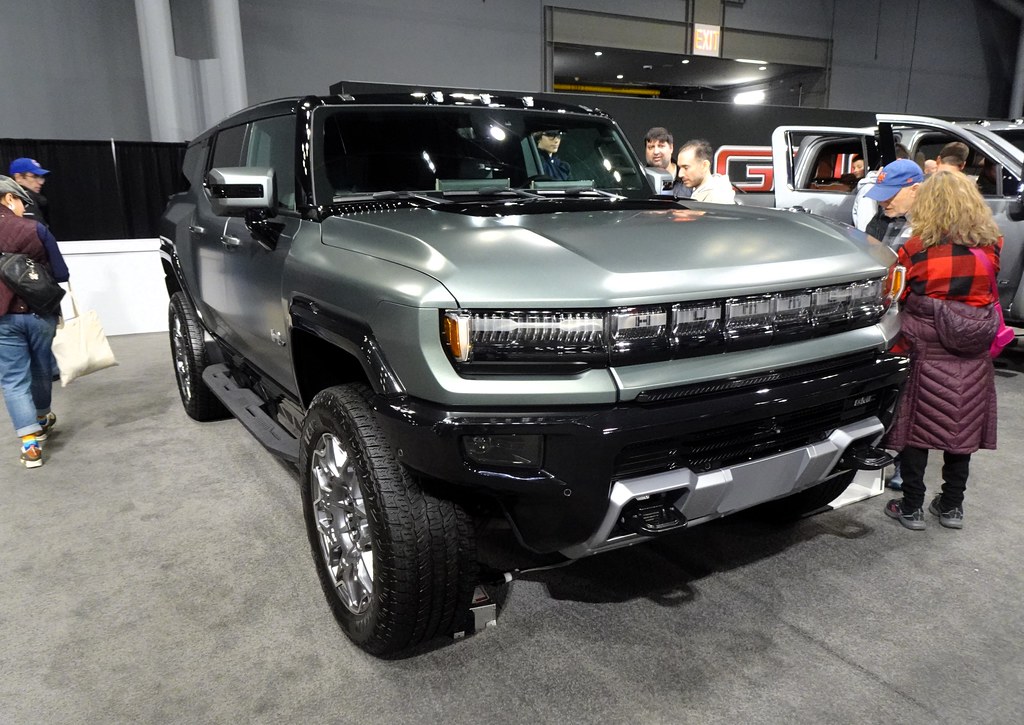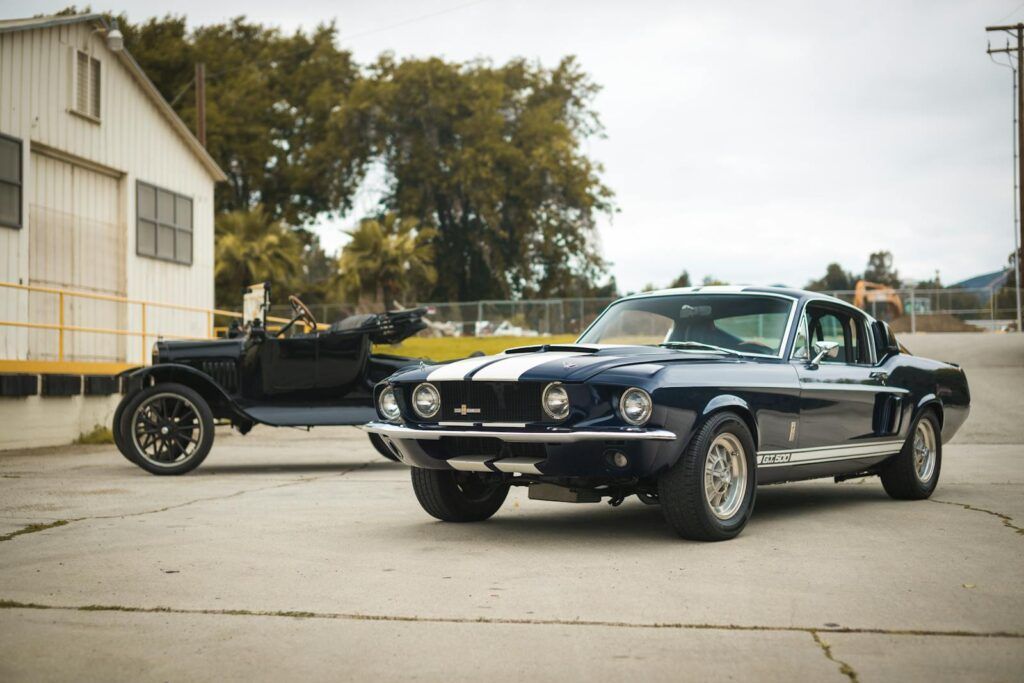
Automotive history is a wild ride, packed with incredible triumphs and epic misfires. Automakers, fueled by ambition and the relentless pursuit of the next big thing, frequently gamble on innovative concepts and daring designs. Sometimes, these calculated risks deliver legendary vehicles that redefine their segments. Other times, however, they backfire spectacularly, transforming what was once a ‘rad’ idea or a hotly anticipated launch into a ‘regrettable’ entry in the automotive hall of shame. These are the machines that ignite fierce debate, frustrate owners, and occasionally achieve infamy for all the wrong reasons.
The path from concept sketch to showroom floor is fraught with peril. A groundbreaking design might fail to connect with buyers, a promising engine concept could be plagued by crippling unreliability, or market trends might simply shift beneath a model’s feet. These failures serve as harsh, often public, lessons for the auto industry, stark reminders that even the most venerable brands aren’t immune to making mistakes that prematurely end a model’s production run. From critical safety concerns and pervasive mechanical flaws to the simple inability to attract a loyal following, the narrative of automotive development is rarely a straightforward success story.
Yet, the story isn’t always cut and dry. Some vehicles genuinely embody ‘rad’ engineering or offer unique features, only to be unfairly tarnished by public perception or initial quality stumbles. Others launch with immense hype, promising a revolutionary experience, but deliver a driving reality that leaves owners utterly disappointed. In this in-depth exploration, we’re not just highlighting objectively ‘bad’ cars; we’re dissecting those whose journey from bold vision to eventual discontinuation, or from cult status to widespread derision, vividly illustrates the volatile and often unpredictable nature of the automotive world. Prepare to journey through the unfiltered history of 14 automobiles that dared to be different, but whose destinies took them from ‘rad’ aspirations to deeply ‘regrettable’ realities.

1. **Ford Edsel (1958-1960)**The Ford Edsel, launched in 1958, was meant to be revolutionary. Marketed with a grand vision, it was pitched as the “car of the future,” a luxury vehicle that would perfectly bridge the gap between Ford and Lincoln. This “rad” ambition saw Ford pour millions into its development and an extensive, almost evangelical, marketing campaign. It was a monumental bet, a confident stride into a new market segment, aimed at an aspirational post-war American consumer yearning for distinctive style and advanced features.
But the Edsel’s trajectory swiftly spiraled into “regrettable” territory. Its polarizing design, particularly the now-infamous “horse-collar” grille, became an immediate target for ridicule, widely mocked for its awkwardness rather than admired for its uniqueness. Beyond the visual misstep, the Edsel suffered from rampant reliability issues and shockingly poor quality control. Many vehicles rolled off the assembly line with basic flaws: misaligned parts, faulty wiring, and persistent fluid leaks, eroding buyer confidence almost instantly.
Adding to the confusion was Ford’s innovative, yet frustrating, push-button transmission located in the steering wheel hub—a feature that proved more annoying than advanced. The car’s launch also coincided disastrously with a late 1950s recession, when practical, affordable vehicles were in demand, not an overhyped luxury model. Discontinued by 1960, the Edsel stands as a legendary cautionary tale of marketing hubris and fundamental misjudgment, a spectacular failure of a “rad” idea turning unequivocally “regrettable.”
Car Model Information: 1958 Edsel Citation
BirthName: Edsel Bryant Ford
Caption: Ford in 1921
BirthDate: [object Object]
BirthPlace: Detroit, Michigan
DeathDate: [object Object]
DeathPlace: Grosse Pointe Shores, Michigan
Occupation: Automobile executive
Title: Ford Motor Company
Spouse: [object Object]
Parents: Henry Ford,Clara Bryant Ford
Relations: Edsel Ford II
Children: Henry Ford II,Benson Ford,Josephine Ford,William Clay Ford Sr.
Categories: 1893 births, 1943 deaths, 20th-century American businesspeople, All Wikipedia articles written in American English, All articles with dead external links
Summary: Edsel Bryant Ford (November 6, 1893 – May 26, 1943) was an American business executive and philanthropist, who was the only child of pioneering industrialist Henry Ford and his wife, Clara Jane Bryant Ford. He was the president of the Ford Motor Company from 1919 until his death in 1943.
He worked closely with his father, as sole heir to the business, but was keen to develop cars more exciting than the Model T (“Tin Lizzie”), in line with his personal tastes. Even as president, he had trouble persuading his father to allow any departure from this formula. Only a change in market conditions enabled him to develop the more fashionable Model A in 1927. Edsel also founded the Mercury division and was responsible for the Lincoln-Zephyr and Lincoln Continental. He introduced important features, such as hydraulic brakes, and greatly strengthened the company’s overseas production.
Ford was a major art benefactor in Detroit and also financed Admiral Richard Byrd’s polar explorations. He died of stomach cancer aged 49. Henry Ford temporarily reassumed the presidency of Ford Motor Company on Edsel’s death, then Edsel’s eldest son, Henry Ford II, succeeded Henry as president of the company in 1945.
He was also a member of the board of directors of American IG, the American subsidiary of the German chemical conglomerate IG Farben.
Get more information about: Edsel Ford
Buying a high-performing used car >>>
Brand: Ford Model: Edsel
Price: Not Priced Mileage: 68,904 mi.
Read more about: Gearhead Dreams: 15 Iconic Defunct Car Brands We Desperately Want Back on the Road

2. **Pontiac Aztek (2001-2005)**The Pontiac Aztek, introduced in 2001, is perhaps the ultimate poster child for a “rad” concept gone “regrettably” wrong, only to gain a strange cult status. On paper, it was genuinely innovative: a versatile SUV designed for an adventurous, outdoorsy lifestyle. It boasted remarkable utility features like cavernous cargo space, removable rear seats, an integrated cooler, and even an optional tent attachment. Pontiac aimed to capture a young, active demographic with a vehicle that was truly multi-functional, a bold attempt at lifestyle integration that was arguably ahead of its time.
However, the Aztek’s promising functionality was utterly eclipsed by its design, which immediately plunged it into the “regrettable” category. Its awkward proportions, distinctive plastic cladding, oddly stacked headlights, and a rear end that looked like an afterthought made it an instant punchline. It quickly became synonymous with automotive ugliness, proving that no matter how practical a vehicle might be, if its aesthetics are widely derided, market success will remain elusive. Even a concerted marketing push, including product placement on *Survivor*, couldn’t save it from public scorn.
Mechanically, the Aztek was rather unremarkable, with a standard V6 offering average performance. It lacked any compelling dynamics to distract from its polarizing exterior. Pontiac ceased production in 2005 after just four short years. Ironically, the Aztek later found an unexpected cult following, notably through its memorable role in *Breaking Bad*, prompting some to argue it was merely misunderstood. Yet, for all its belated appreciation, its initial commercial failure firmly cements its status as a radical idea marred by an unforgettable, “regrettable” design.
Car Model Information: 2003 Pontiac Aztek FWD
Name: Pontiac Aztek
Manufacturer: General Motors
Production: July 2000 – December 2004
Assembly: Ramos Arizpe
Designer: Tom Peters (chief designer: 1997)
Class: Mid-size crossover SUV
BodyStyle: SUV
Platform: GM U platform
Related: Buick Rendezvous
Layout: Front-engine, front-wheel-drive layout
Engine: General Motors 60° V6 engine#LA1,V6
Transmission: GM 4T65-E transmission,Automatic transmission
Wheelbase: 108.3 in (2,751 mm)
Length: 182.1 in (4,625 mm)
Width: 73.7 in (1,872 mm)
Height: 66.7 in (1,694 mm)
Weight: 3,779–4,043 lb (1,714–1,834 kg)
Predecessor: Pontiac Sunrunner
Successor: Pontiac Torrent
ModelYears: 2001–2005
Categories: All-wheel-drive vehicles, All articles needing additional references, All articles with unsourced statements, Articles needing additional references from October 2013, Articles with short description
Summary: The Pontiac Aztek is a mid-size crossover SUV marketed by General Motors introduced in 2000 for the model years 2001 through 2005. As a four-door crossover with front-wheel drive and optional all-wheel drive, the Aztek featured a four-speed automatic transmission with a V6 engine. Marketed by Pontiac as a “sport recreational vehicle,” the Aztek used a shortened platform shared with GM’s minivans (e.g., the Pontiac Montana) featuring 94 cubic feet of cargo room with its rear seats removed. The design employed conventional rear outswing doors rather than sliding doors, and a split rear tailgate, the lower section formed with seat indentations and cupholders. Other features included a front center console that doubled as a removable cooler, optional rear stereo controls in the cargo area, optional sliding cargo floor with grocery compartments, and optional camping package with an attachable tent and air mattress.
Get more information about: Pontiac Aztek
Buying a high-performing used car >>>
Brand: Pontiac Model: Aztek
Price: $4,200 Mileage: 91,955 mi.
Read more about: The Road to Ruin: 12 High-Performance Cars That Drove Straight into Disaster and Became Automotive Nightmares

3. **DeLorean DMC-12 (1981-1983)**The DeLorean DMC-12 evokes a powerful image of “rad” futurism. With its iconic stainless steel body and breathtaking gull-wing doors, it was a car plucked straight from a science fiction movie, promising to be the ultimate sports car of its era. John DeLorean’s ambitious vision was to combine exotic looks with practical drivability, capturing the imaginations of enthusiasts worldwide. For a brief, dazzling moment, the DMC-12 was the epitome of automotive aspiration, a bold statement in design and engineering.
Yet, the reality of the DMC-12 was firmly rooted in “regrettable” disappointment. Despite its stunning exterior, the car was plagued by poor build quality, underwhelming performance, and an engine that proved notoriously unreliable. Massive production delays and egregious cost overruns meant that by the time it reached showrooms, it was both overpriced and severely underpowered. Its Peugeot-Renault-Volvo V6 engine could only muster 130 horsepower, rendering it sluggish and unresponsive—a far cry from the spirited performance expected of a sports car with such a dramatic presence.
Quality control issues were rampant, leading to frequent mechanical failures that quickly soured the ownership experience. The dream of owning a piece of the future often devolved into a nightmare of constant repairs. Financial troubles for DeLorean Motor Company mounted, eventually culminating in a highly publicized drug scandal involving John DeLorean himself, which irrevocably sealed the company’s fate. Only about 9,000 units were built before the company collapsed in 1982. While *Back to the Future* cemented its “rad” pop culture icon status, the DMC-12 was, in truth, a profound “regrettable” failure as a production sports car.
Car Model Information: 1982 Delorean DMC-12
Name: DMC DeLorean
Alt: 1983 DeLorean
Caption: 1983 DeLorean
Manufacturer: DeLorean Motor Company
Production: January 21, 1981 – December 1982
ModelYears: 1981–1983
Assembly: Dunmurry
Designer: Giorgetto Giugiaro
Class: Sports car
BodyStyle: coupé
Layout: Rear-engine, rear-wheel-drive layout
Doors: Gull-wing doors
Engine: 2.85 L
Abbr: on
Powerout: 130 hp
Transmission: 5-speed manual ,3-speed automatic
Wheelbase: 2413 mm
Length: 4267 mm
Width: 1988 mm
Height: 1140 mm
Weight: 1233 kg
Sp: us
Categories: 1980s cars, All Wikipedia articles written in American English, Articles with short description, Automobiles with backbone chassis, Automobiles with gull-wing doors
Summary: The DMC DeLorean is a rear-engine, two-seat sports car manufactured and marketed by John DeLorean’s DeLorean Motor Company (DMC) for the American market from 1981 until 1983—ultimately the only car brought to market by the fledgling company. The DeLorean is sometimes referred to by its internal DMC pre-production designation, DMC-12, although this was not used in sales or marketing materials for the production model.
Designed by Giorgetto Giugiaro, the DeLorean is noted for its gull-wing doors and brushed stainless-steel outer body panels, as well as its lack of power and performance. Though its production was short-lived, the DeLorean became widely known after it was featured as the time machine in the Back to the Future films.
With the first production car completed on January 21, 1981, the design incorporated numerous minor revisions to the hood, wheels and interior before production ended in late December 1982, shortly after DMC filed for bankruptcy and after total production reached an estimated 9,000 units.
Despite the car having a reputation for poor build quality and an unsatisfactory driving experience, the DeLorean continues to have a strong following, driven in part by the popularity of Back to the Future. 6,500 DeLoreans were estimated to still be on the road as of 2015.
Get more information about: DMC DeLorean
Buying a high-performing used car >>>
Brand: DeLorean Model: DMC-12
Price: $129,950 Mileage: 3,145 mi.
Read more about: The Road to Ruin: 12 High-Performance Cars That Drove Straight into Disaster and Became Automotive Nightmares
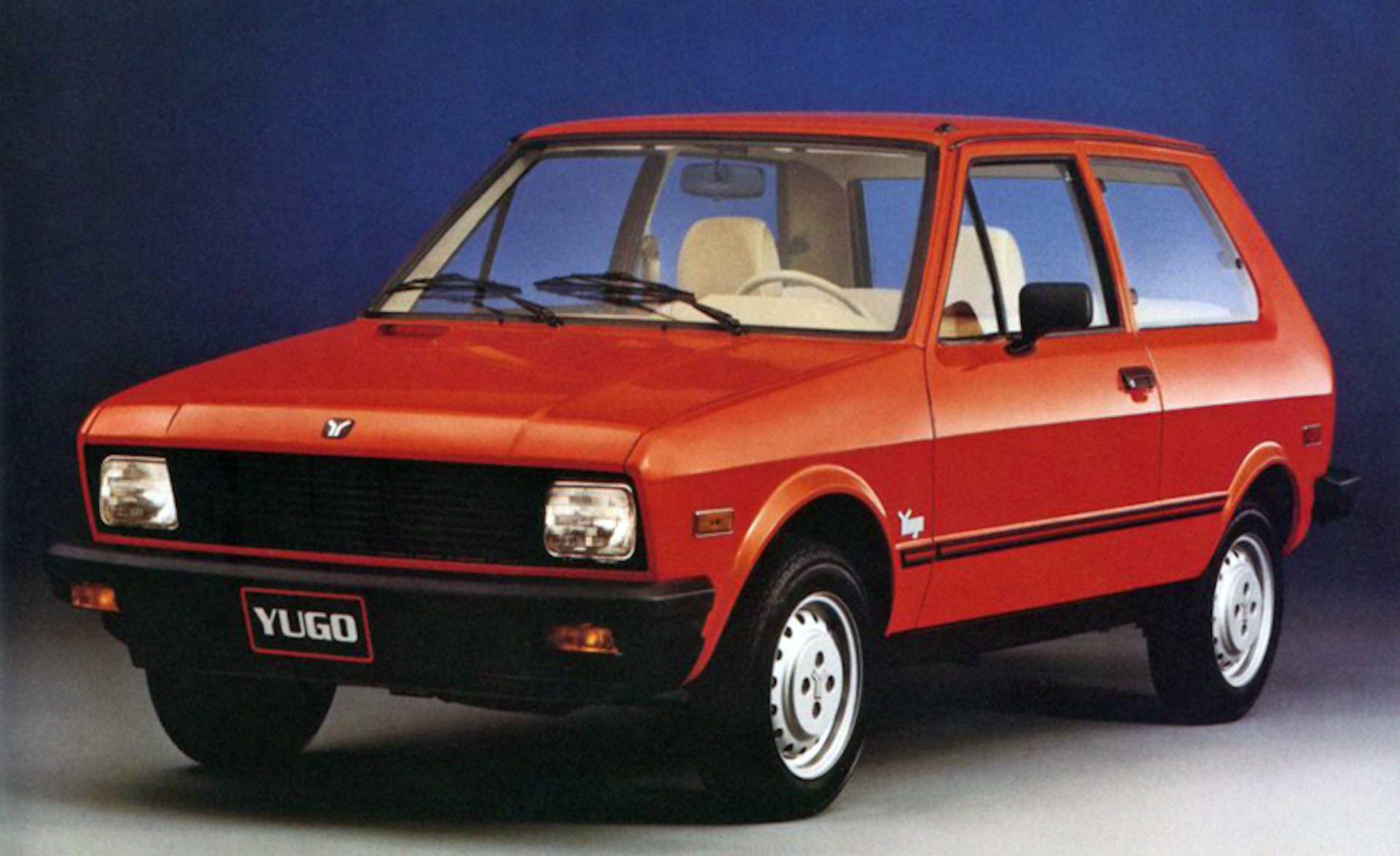
4. **Yugo GV (1985-1992)**The Yugo GV arrived in the U.S. in the mid-1980s with a singular, “rad” proposition: extreme affordability. Marketed as the ultimate no-frills, budget-conscious car, it quickly became one of the cheapest new vehicles available, priced at an astonishing $3,990. In an era of rising car costs, the Yugo offered a seemingly miraculous gateway to new car ownership for many, and that initial promise of incredible value resonated, generating significant buzz for its sheer accessibility. It was an intriguing, if audacious, experiment in mass-market, ultra-cheap transportation.
However, the Yugo’s low price quickly revealed a steep, “regrettable” cost in terms of quality. Owners swiftly discovered why it was so cheap: it was notoriously unreliable, shoddily built, and often outright dangerous. The car’s outdated Fiat-based design, combined with abysmal manufacturing standards from Yugoslavia, led to a cascade of pervasive problems. Drivers frequently battled engine failures, persistent electrical issues, and parts that seemed to spontaneously detach or disintegrate, turning excitement into immediate frustration.
Driving the Yugo was a constant exercise in compromise and anxiety. Its tiny 55-horsepower engine made highway travel a precarious challenge, struggling to maintain pace and merge safely. Safety concerns, exacerbated by its flimsy construction and abysmal crashworthiness, only cemented its notoriety. The Yugo rapidly became a national joke, synonymous with automotive inadequacy and unreliability. Disappearing from U.S. dealerships by the early 1990s, it’s remembered more for its infamous reputation than its initial promise, a car that went from a “rad” concept of affordability to an utterly “regrettable” real-world automotive disaster.
Read more about: Planning on Trouble? The 14 Engines and Models Most Likely to Leave You Stranded Before 100,000 Miles
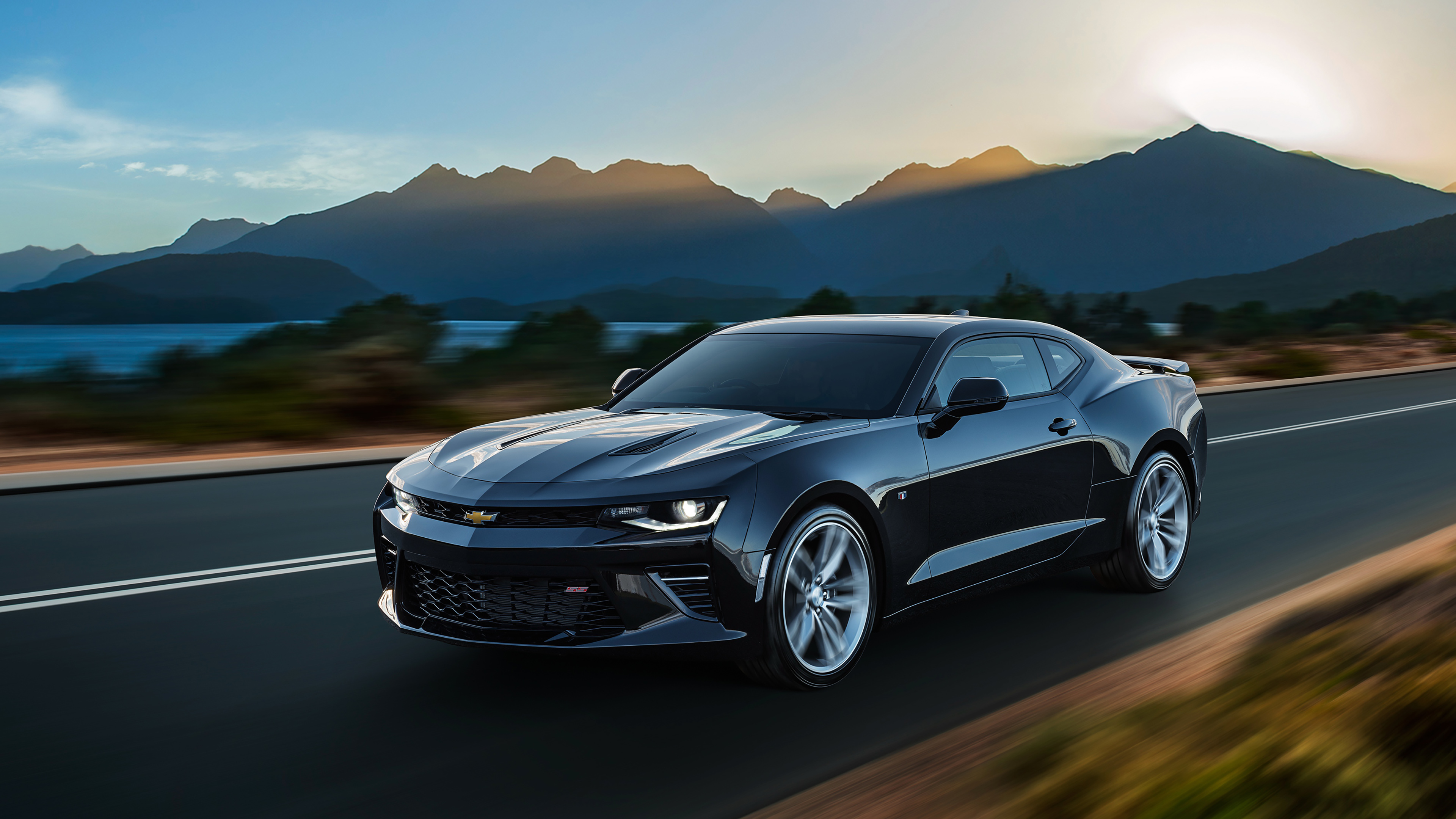
5. **Chevrolet Vega (1971-1977)**The Chevrolet Vega debuted in 1971 with considerable “rad” expectations. It was GM’s ambitious response to the growing wave of fuel-efficient imports, boasting a sleek, contemporary design and promising impressive economy at a time of rising gas prices. The Vega was envisioned as a groundbreaking American compact, a symbol of domestic engineering prowess adapting to new market demands. Its clean lines and an innovative aluminum engine block initially gave it a strong, forward-thinking appeal, suggesting a bright future in the burgeoning small car segment.
Unfortunately, the Vega’s swift descent into “regrettable” infamy became a textbook example of corporate haste over quality. GM’s accelerated timeline to bring the car to market resulted in a litany of catastrophic quality issues that cemented its negative reputation. A prime flaw was its aluminum engine block, which, due to poor cooling system design, was prone to warping and premature failure, leading to excessive oil consumption and infuriating engine wear. Compounding these mechanical woes, the Vega’s body panels were notoriously susceptible to rust, even in mild climates, giving many vehicles a prematurely decrepit appearance.
Despite strong initial sales driven by aggressive marketing, word of the Vega’s pervasive problems spread like wildfire, causing consumer trust to plummet. GM’s frantic attempts to rectify the issues through multiple redesigns and recalls only highlighted the fundamental flaws from its hurried development. By 1977, the Chevrolet Vega was quietly discontinued, leaving behind a bitter legacy as one of the most infamous automotive failures in history. What started as a “rad” vision for a competitive American compact ended as a devastatingly “regrettable” lesson in manufacturing shortcuts.
Read more about: Expert Insights: 14 Classic Cars That Are Simply Not Worth Your Hard-Earned Money

6. **Chrysler TC by Maserati (1989-1991)**The Chrysler TC by Maserati, launched in 1989, promised a “rad” fusion of American engineering and Italian luxury, a limited-edition roadster meant to elevate Chrysler’s brand image through its association with Maserati. The concept of a high-end personal luxury coupe, co-developed with an iconic Italian automaker, held immense appeal, hinting at a sophisticated and exclusive driving experience. It was a bold, aspirational project for Chrysler, aiming to carve out a niche in a more prestigious market segment and infuse some European flair into its lineup.
However, the reality of the TC by Maserati was a journey directly into “regrettable” disappointment. Its fatal flaw was the undeniable, and widely criticized, visual and mechanical similarity to the much cheaper Chrysler LeBaron. This glaring lack of differentiation made its significantly higher price tag—often double that of a LeBaron—utterly unjustifiable for luxury buyers. The Maserati influence felt superficial, failing to deliver the bespoke, unique feel that its nameplate and price demanded, immediately raising skepticism among potential customers.
Performance, a hallmark of Maserati, was another major letdown. Most TCs were equipped with underwhelming powertrains that couldn’t deliver either genuine luxury refinement or engaging sports car thrills. The car was slow, uninspired, and plagued by inconsistent build quality, further frustrating premium-paying buyers. Compounding its woes, the TC suffered from prolonged development, launching just as the personal luxury coupe market was fading. With weak sales and a confused identity, the Chrysler TC by Maserati was quietly discontinued after just a few short years, cementing its place as a “rad” idea with “regrettable” execution.
Car Model Information: 1989 Chrysler TC by Maserati Turbo 2dr Convertible
Name: Chrysler TC by Maserati
Manufacturer: Maserati,Chrysler (division)
Production: 1988–1990
ModelYears: 1989–1991
Class: Grand tourer
Layout: Front-engine, front-wheel-drive layout
Predecessor: Imperial (automobile)#Sixth generation (1981–1983)
Successor: Chrysler Crossfire
Platform: Chrysler Q platform
BodyStyle: convertible
Engine: Chrysler 2.2 & 2.5 engine#Turbo II,Chrysler 2.2 & 2.5 engine#TC,Mitsubishi 6G7 engine#6G72
Transmission: manual transmission,TorqueFlite,Ultradrive
Weight: 3033 lb
Abbr: on
Wheelbase: 93.3 in
Length: 175.8 in
Width: 68.5 in
Height: 51.9 in
Assembly: Torino,Sparone,Milan
Categories: 1990s cars, All articles with unsourced statements, Articles with short description, Articles with unsourced statements from August 2025, Articles with unsourced statements from March 2021
Summary: The Chrysler TC by Maserati is a two-seat, two-door convertible car jointly developed by Chrysler and Maserati. Introduced at the 1986 Los Angeles Auto Show., the TC was positioned as a grand tourer using a “Q” body on a modified second-generation Chrysler K platform. After two years of development delays, the TC became available in late-1988 and a total of 7,300 units (the minimum required under the contract) were manufactured in Milan, Italy, through 1990. All cars sold as 1991 models were manufactured in 1990.
Get more information about: Chrysler TC by Maserati
Buying a high-performing used car >>>
Brand: Chrysler Model: TC
Price: $7,855 Mileage: 68,559 mi.
Read more about: The Road to Ruin: 12 High-Performance Cars That Drove Straight into Disaster and Became Automotive Nightmares

7. **Suzuki X-90 (1996-1998)**The Suzuki X-90, introduced in 1996, was, without question, one of the most conceptually “rad” and visually bizarre SUVs ever to hit the market. Suzuki positioned it as a fun, sporty alternative to conventional SUVs, a compact two-seater featuring removable T-tops and distinctive, almost cartoonish, styling. It was an audacious attempt to blend the open-air exhilaration of a convertible with the rugged perception of an SUV, targeting a niche audience seeking genuine uniqueness and an adventurous spirit. For a brief moment, its sheer eccentricity promised a “rad” departure from the automotive norm.
Yet, its journey from quirky concept to market reality rapidly devolved into “regrettable” territory. The X-90’s tiny two-seater design, coupled with its highly awkward proportions, made it appear more like a novelty toy than a serious off-road contender or a practical daily driver. The styling, which aimed for distinctive, ultimately landed on bewildering, failing to resonate with a broad enough consumer base. Most buyers were seeking either genuine SUV capability or pure sports car fun, not an uncomfortable, impractical amalgamation of both.
Performance was another significant weak spot solidifying its “regrettable” status. Despite its lightweight construction, the X-90’s anemic 1.6-liter engine produced only 95 horsepower, rendering it painfully slow and underpowered for anything beyond city cruising. Its limited cargo space further hampered practicality for both errands and any semblance of off-road adventure. With sluggish sales and minimal demand, Suzuki pulled the plug on the X-90 after just two years in 1998. It remains a forgotten ’90s oddity, a “rad” idea so fundamentally miecuted that it could only be remembered as a truly “regrettable” automotive misfire.
Car Model Information: 1996 Suzuki X-90 4WD
Name: Suzuki X-90
Manufacturer: Suzuki
Aka: Suzuki Vitara X-90 (Europe)
Production: 1995–1997
Assembly: Iwata, Shizuoka
Class: Subcompact car
BodyStyle: coupe
Layout: Front-engine, rear-wheel-drive layout,Front-engine, four-wheel-drive layout
Chassis: Body-on-frame
Engine: SOHC,Suzuki G engine#G16A
Transmission: Automatic transmission,Manual transmission
Wheelbase: 2200 mm
Abbr: on
Length: 3710 mm
Width: 1695 mm
Height: 1550 mm
Weight: 1100 kg
Related: Suzuki Vitara
Predecessor: Suzuki Jimny#Second generation (1981)
Categories: All-wheel-drive vehicles, All articles with unsourced statements, Articles with short description, Articles with unsourced statements from August 2018, Cars introduced in 1995
Summary: The Suzuki X-90 is a front engine, rear or four wheel drive, two door, two seater car manufactured and marketed by Suzuki for the model years 1995-1997. Derived from the Suzuki Vitara, the X-90 featured a T Section removable roof. Replacing the Samurai in the market in the United States, Suzuki began marketing the X-90 in Japan by the end of 1995, and in western markets in April 1996.
Get more information about: Suzuki X-90
Buying a high-performing used car >>>
Brand: Suzuki Model: X-90
Price: $5,000 Mileage: 146,943 mi.
Read more about: The Road to Ruin: 12 High-Performance Cars That Drove Straight into Disaster and Became Automotive Nightmares

8. **Saturn Ion (2003-2007)**The Saturn Ion, introduced in the early 2000s, was meant to be a fresh chapter for the brand, replacing the well-regarded S-Series. General Motors saw a “rad” opportunity to launch a modern, distinctive compact car, appealing to a new demographic with Saturn’s unique sales model. It aimed to inject new life and contemporary design into a brand that was otherwise starting to lose its way, signaling an ambitious move into the future.
Unfortunately, the Ion’s execution swiftly turned this “rad” ambition into a “regrettable” reality. Its interior was a parade of cheap, hard plastics, exacerbated by an awkward center-mounted instrument cluster that proved more distracting than innovative. The driving dynamics were equally uninspiring; vague electric power steering and a genuinely rough ride made the Ion a chore, not a pleasure, to drive. Even the performance-oriented Red Line model couldn’t mask these fundamental shortcomings.
The final nail in the Ion’s coffin was its involvement in GM’s infamous ignition switch defect, leading to widespread recalls and legal battles that utterly decimated consumer trust. This catastrophic flaw, combined with persistent quality issues and sluggish sales, forced its discontinuation in 2007. The Saturn Ion stands as a painful, “regrettable” reminder that a strong concept and a unique brand identity are meaningless without solid execution and unwavering quality control.
Car Model Information: 2006 Saturn Ion 2
Name: Saturn Ion
Caption: 2005–07 Ion (facelift)
Manufacturer: Saturn Corporation
Production: 2002–March 29, 2007
ModelYears: 2003–2007
Assembly: Spring Hill, Tennessee
Class: Compact car
BodyStyle: sedan (automobile)
Platform: GM Delta platform
Related: Chevrolet Cobalt,Chevrolet HHR,Pontiac G5,Opel Astra
Layout: Front-engine, front-wheel-drive layout
Engine: Liter,GM Ecotec engine#L61,Straight-four engine
Transmission: Getrag,Getrag F23 transmission
Wheelbase: 103.2 in
Abbr: on (Red Line)
Length: 184.5 in
Width: 67.2 in
Height: 57.4 in
Weight: convert
Predecessor: Saturn S-Series
Successor: Saturn Astra
Categories: Articles with short description, Cars discontinued in 2007, Cars introduced in 2002, Commons category link is on Wikidata, Compact cars
Summary: The Saturn Ion is a compact car sold by Saturn between the 2003 and 2007 model years. Based on the GM Delta platform, the Ion replaced the Saturn S-Series in 2002,
and was replaced by the new Saturn Astra in 2008. Production of the Ion ended on March 29, 2007. The Ion was the last Saturn passenger car built at the Spring Hill, Tennessee plant which was originally linked to the company’s branding, with Saturn owners attending “homecoming” events at the plant.
Get more information about: Saturn Ion
Buying a high-performing used car >>>
Brand: Saturn Model: Ion
Price: Not Priced Mileage: 212,146 mi.
Read more about: The Road to Ruin: 12 High-Performance Cars That Drove Straight into Disaster and Became Automotive Nightmares

9. **Cadillac Cimarron (1982-1988)**In the early 1980s, Cadillac faced the unenviable task of battling European luxury compacts. Their “rad” answer was the Cimarron, a car intended to expand Cadillac’s appeal to a younger, more fuel-conscious demographic. It was a bold attempt to adapt to changing market demands, aiming to prove that Cadillac could build a smaller, sophisticated car without abandoning its luxurious heritage. The vision was clear: a competitive luxury compact for the new age.
However, the Cimarron immediately, and spectacularly, became the epitome of “regrettable” badge engineering. At its heart, it was a Chevrolet Cavalier, dressed up with some leather seats and a few cosmetic tweaks, but priced significantly higher. Consumers quickly saw through this transparent effort, refusing to pay a premium for what was, undeniably, an economy car. This decision not only undermined the Cimarron’s credibility but also devalued the Cadillac brand as a whole.
Performance was another crushing disappointment, failing to meet any luxury expectations. Its base four-cylinder engine was laughably underpowered and unrefined, totally unsuitable for a vehicle bearing the Cadillac crest. Sales were predictably abysmal, leading to its ignominious discontinuation in 1988. The Cimarron remains an infamous “regrettable” chapter in Cadillac’s history, a stark lesson in how desperately rushed decisions can deeply damage a revered brand’s image for decades.
Read more about: Beyond the Hype: 15 Classic Cars That Will Break Your Heart (and Wallet) – A Jalopnik Guide for Enthusiasts
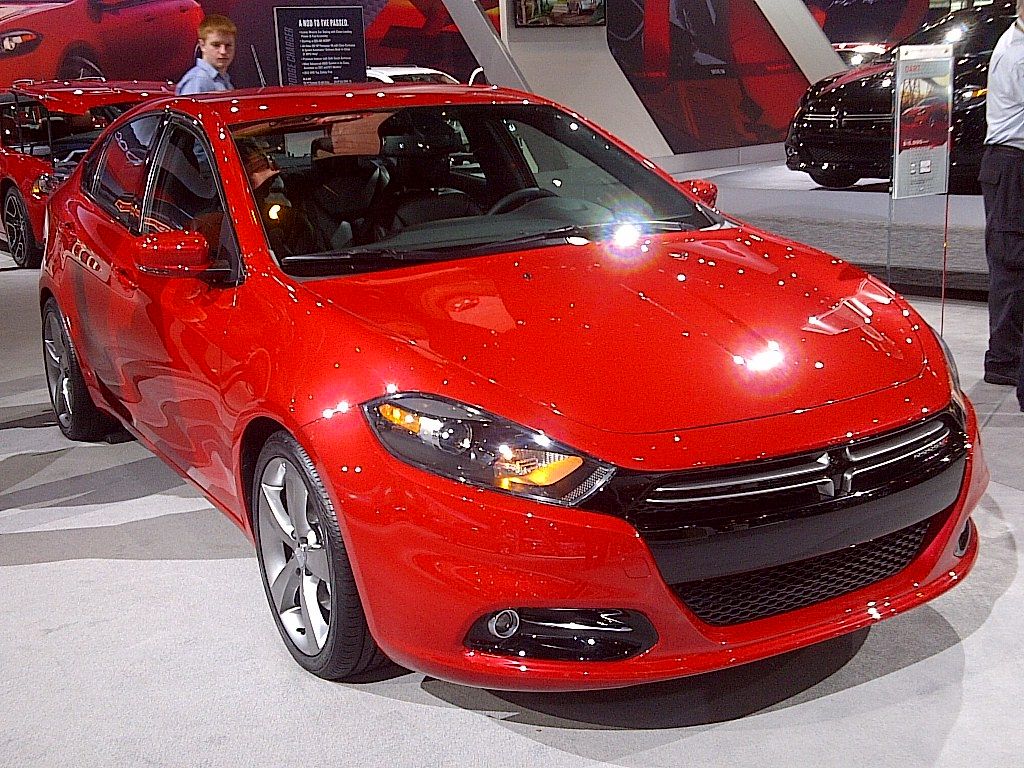
10. **Dodge Dart (2013-2016)**The 2013 revival of the Dodge Dart nameplate initially sparked considerable anticipation, promising a fresh take on the compact sedan. Dodge aimed for a “rad” blend of modern American styling with the dynamic underpinnings of an Alfa Romeo, hoping to inject excitement into a segment often accused of being mundane. The vision was a sporty, engaging compact that would resonate with younger buyers looking for something beyond the typical econobox.
Unfortunately, the Dart’s reality quickly devolved into “regrettable” territory, primarily due to its severely underwhelming powertrains. Whether it was the anemic base 2.0L, the merely adequate 1.4L turbo, or even the 2.4L upgrade, none delivered the spirited performance suggested by its aggressive looks. This lack of power, coupled with an unrefined transmission, particularly the automatic, made the driving experience largely unengaging and frustrating for many.
Beyond the mechanical shortcomings, the Dart suffered from inconsistent build quality and nagging reliability issues that surfaced early on. While its Uconnect infotainment was a bright spot, the interior materials often felt subpar compared to rivals. Crucially, the absence of an all-wheel-drive option, increasingly available from competitors, further hampered its market appeal. With sales never gaining traction against more polished rivals, Dodge quietly discontinued the Dart in 2016, proving that a “rad” name and good intentions alone cannot prevent a “regrettable” market failure.
Car Model Information: 2015 Dodge Dart SXT
Name: Dodge Dart
Caption: 1966 Dodge Dart GT 2-door hardtop
Manufacturer: Dodge
Production: 1959–1976 (US market)
ModelYears: 1960–1976 (US market)
Class: Full-size
Layout: FR layout
Predecessor: Dodge Coronet#Fourth generation (1957–1959)
Related: Plymouth Valiant,Chrysler Valiant,Dodge Phoenix
Successor: Dodge Aspen,Dodge Diplomat,Talbot Tagora
Categories: 1970s cars, All articles with unsourced statements, Articles with short description, Articles with unsourced statements from December 2023, Articles with unsourced statements from May 2025
Summary: The Dodge Dart is a line of passenger cars produced by Dodge from the 1959 to 1976 model years in North America, with production extended to later years in various other markets.
The production Dodge Dart was introduced as a lower-priced full-size model in 1960 and 1961, but became a mid-size car for one model year for 1962, and was then reduced to a compact for two generations, from 1963 to 1976.
Chrysler had first used ‘Dart’ name plates on two Italian styled show cars, in 1956 and 1957, before it became a Dodge model name. The Dart nameplate was resurrected for a Fiat-derived compact car that was introduced in 2012.
Get more information about: Dodge Dart
Buying a high-performing used car >>>
Brand: Dodge Model: Dart
Price: $9,995 Mileage: 143,082 mi.
Read more about: Lemon in the Garage: 14 Models Drivers Vow Never to Buy Again Due to Poor Build Quality
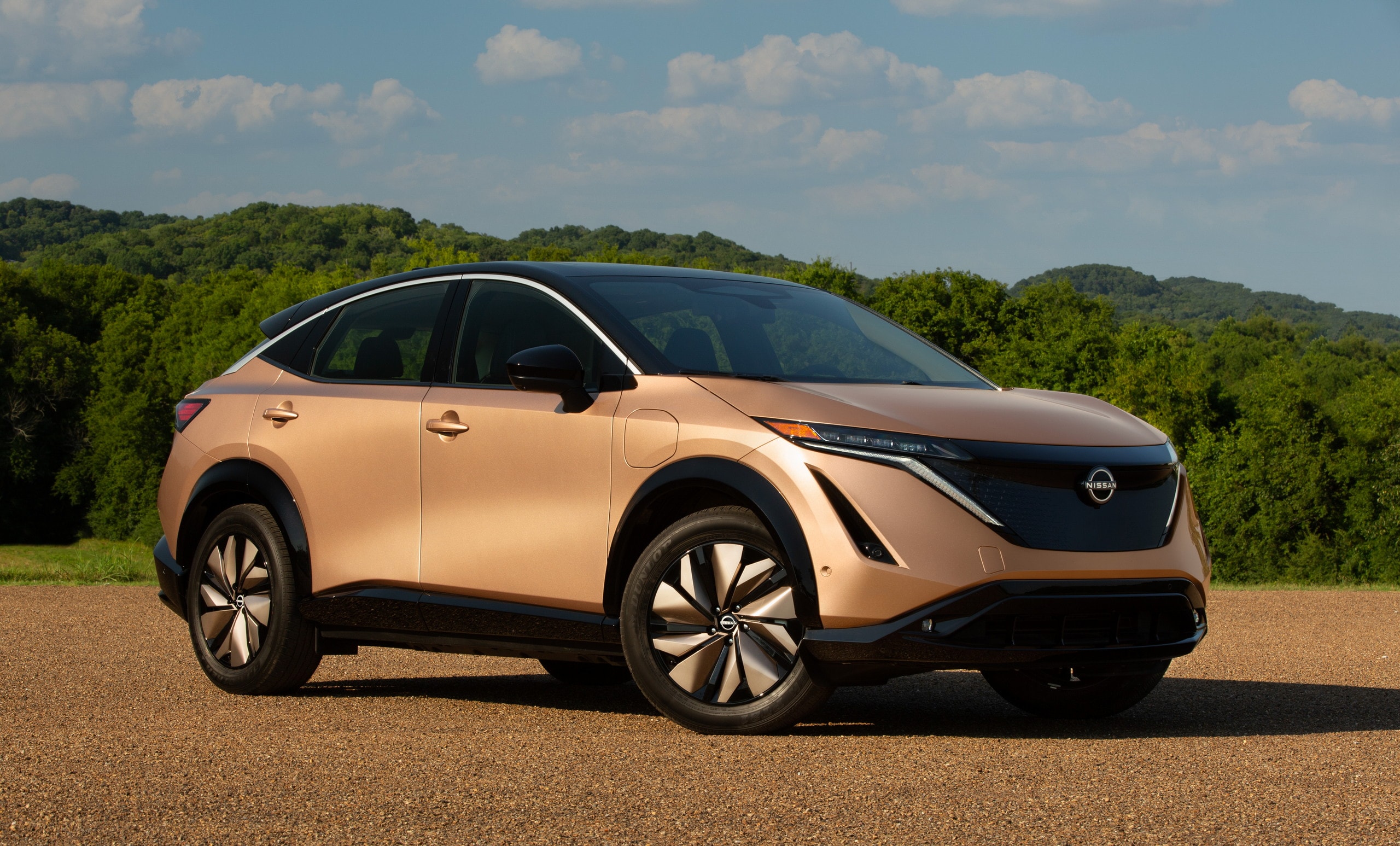
11. **Nissan Murano CrossCabriolet (2011-2014)**The Nissan Murano CrossCabriolet, launched in 2011, embodied a “rad” idea that was almost breathtaking in its audacity: a mid-size SUV bizarrely fused with a convertible. Nissan sought to carve out an entirely new niche, appealing to buyers supposedly craving open-air driving combined with an elevated seating position. It was an undeniably unique, conversation-starting venture, designed to make a dramatic splash in a market increasingly populated by similar-looking crossovers.
However, the CrossCabriolet’s transition from “rad” concept to “regrettable” reality was brutally swift, primarily due to its profoundly awkward aesthetics. Grafting a convertible roof onto the chunky Murano chassis resulted in a vehicle that looked disproportionate, bloated, and utterly unbalanced. It achieved neither the grace of a true convertible nor the purposeful stance of an SUV, instead appearing like a peculiar, ill-conceived custom job. Its polarizing looks alone were enough to deter most potential buyers.
Beyond its polarizing appearance, the vehicle suffered from significant practical compromises. Rear-seat access became a clumsy scramble, and vital cargo space was drastically reduced, obliterating much of the standard Murano’s utility. Priced around $45,000, it offered luxury SUV costs without luxury refinement or genuine practicality. Sales were predictably abysmal, leading Nissan to quietly discontinue it in 2014. The Murano CrossCabriolet remains a peculiar, “regrettable” lesson in automotive design hubris and market misjudgment, proving some “rad” ideas are best left on the drawing board.
Car Model Information: 2025 Audi Q7 55 Premium Plus
Name: Nissan Murano
Manufacturer: Nissan
Production: 2002–present
ModelYears: 2003–present
Class: Mid-size crossover SUV
Layout: Front-engine, front-wheel-drive layout
Predecessor: Nissan R’nessa
Successor: Nissan Pathfinder#Pathfinder Concept (2023, China)
Caption: 2024 Nissan Murano (Z52)
Categories: 2010s cars, 2020s cars, All-wheel-drive vehicles, All Wikipedia articles written in American English, All articles with dead external links
Summary: The Nissan Murano (Japanese: 日産・ムラーノ, Hepburn: Nissan Murāno) is a mid-size crossover SUV manufactured and marketed by Nissan since May 2002 for the 2003 model year. The fourth generation was revealed in October 2024.
As Nissan’s first crossover SUV for the United States and Canada, the Murano was designed at Nissan America in La Jolla, California, and was based on the Nissan FF-L platform shared with the third generation Altima. The European version of the Murano began sales in 2004.
The Murano was Nissan’s only crossover SUV in the United States until September 2007, when the Rogue went on sale. In Canada, the X-Trail had been on sale as Nissan’s second car based SUV since 2004 as a model for 2005; it was replaced by the 2008 Rogue at the end of 2007. The Murano is sized between the Pathfinder and the discontinued Xterra (which was replaced by the Rogue as a compact SUV). For the model years of 2011 to 2014, a convertible variant, the Murano CrossCabriolet, was available for the second-generation model. As of 2018, the Murano is sized between the X-Trail and the larger Pathfinder.
The nameplate Murano derives from the Italian islands of Murano and the namesake Murano art glass for which the islands are widely known.
Get more information about: Nissan Murano
Buying a high-performing used car >>>
Brand: Nissan Model: Murano CrossCabriolet
Price: $55,675 Mileage: 20,490 mi.
Read more about: The Road to Ruin: 12 High-Performance Cars That Drove Straight into Disaster and Became Automotive Nightmares

12. **Hummer H2 (2002-2009)**When the Hummer H2 arrived in 2002, it was designed to make an unmistakable statement: an unapologetic declaration of size and presence. Inspired by the military Humvee, the H2 brought a “rad” level of overt masculinity and rugged capability to civilian roads, embodying the early 2000s’ fascination with larger-than-life vehicles. It was for those who wanted to stand out, loudly, from the crowd with a vehicle that exuded power and unwavering confidence.
However, the H2’s grand statement quickly morphed into a deeply “regrettable” liability. Its primary flaw was truly atrocious fuel economy; equipped with a thirsty V8, it consistently delivered single-digit miles per gallon. As fuel prices rose and environmental awareness grew, this insatiable thirst became a significant public relations problem and a major deterrent for potential buyers. Its monstrous size also made urban parking and navigating tight streets a frustrating ordeal.
Despite its formidable looks, the H2’s immense weight and wide stance often hindered its real-world off-road performance, making it more about image than genuine prowess. By the late 2000s, economic shifts and a move towards more practical vehicles sealed its fate. General Motors discontinued it in 2009, marking the “regrettable” end of an era for such extravagant, gas-guzzling SUVs and a clear sign of changing consumer priorities.
Car Model Information: 2003 Hummer H2 Base
Name: Hummer H2
Manufacturer: AM General
Production: 2002–2009
ModelYears: 2003–2009
Assembly: Mishawaka, Indiana,Kaliningrad,designer = Clay Dean (2000)
Class: Full-size SUV
BodyStyle: Sports utility vehicle,pickup truck
Platform: GMT800
Related: Chevrolet Silverado,Chevrolet Avalanche,Chevrolet Tahoe,Chevrolet Suburban,Cadillac Escalade
Layout: Front-engine, four-wheel-drive layout,four-wheel drive
Engine: General Motors LS-based small-block engine#LQ4
Transmission: 4L60E,4-speed 4L65E automatic (2005–2007),automatic transmission
Wheelbase: 122.8 in
Abbr: on – 6.2 L
Length: 203.5 in
Width: 81.3 in
Height: 2002–03: {{convert,77.8,in,mm,0,abbr=on
Weight: {{convert,6400,lb,kg,0,abbr=on
Categories: 2000s cars, AM General vehicles, All-wheel-drive vehicles, All articles needing additional references, Articles needing additional references from January 2024
Summary: The Hummer H2 is a full-size off-road SUV that was marketed by Hummer and built in the AM General facility under contract from General Motors from 2002 until 2009. It is based on a modified GMT820 GM three-quarter-ton pickup truck in the front and a half-ton 1500 frame in the rear. A four-door pickup truck version with a midgate that opens the vehicle’s interior to the external cargo bed was introduced for the 2005 model year as the H2 SUT (sport utility truck).
Get more information about: Hummer H2
Buying a high-performing used car >>>
Brand: Hummer Model: H2
Price: $12,490 Mileage: 152,679 mi.
Read more about: The Road to Ruin: 12 High-Performance Cars That Drove Straight into Disaster and Became Automotive Nightmares

13. **Smart ForTwo**The Smart ForTwo arrived with a seemingly “rad” and forward-thinking vision: an ultra-compact city car meticulously crafted to conquer increasingly congested urban landscapes. Its ingenious packaging, minuscule footprint, and promise of effortless parking made absolute sense on paper, positioning it as the ultimate solution for metropolitan dwellers. It was a bold challenge to automotive norms, suggesting that intelligent, efficient smallness could truly thrive in the urban jungle.
Yet, the ForTwo’s execution quickly steered its journey into “regrettable” territory, largely due to a glaring lack of refinement. While its micro-dimensions were perfect for tight parking spots, the actual driving experience was often jarring. The notorious automated manual transmission delivered shifts so abrupt and clumsy that even short journeys felt like a series of unsettling lurches, leaving drivers feeling disconnected and frustrated by its unpolished dynamics.
Further solidifying its “regrettable” status were its questionable highway manners. Its lightweight nature and short wheelbase made it surprisingly unstable at speed, susceptible to crosswinds and buffeting from larger vehicles. When more refined, better-equipped compacts were available for a marginally higher price, the ForTwo’s singular advantage of microscopic size proved insufficient. Its “rad” concept of urban hyper-efficiency was fundamentally undermined by the “regrettable” reality of a frustrating driving experience, limiting it to a niche curiosity.
Car Model Information: 2008 smart ForTwo passion
Name: Smart Fortwo
Manufacturer: Daimler-Benz
Aka: Smart City-Coupé (1998–2002),Smart car (colloquially)
Production: 1998–2007 (MkI),2006–2014 (MkII),2014–2024 (MkIII)
Assembly: Hambach, Moselle
Class: City car,Microcar
BodyStyle: hatchback
Layout: Rear-engine, rear-wheel-drive layout,Rear-engine, rear-wheel-drive layout
Related: Smart Roadster,Smart Forfour
Successor: Smart 2
Categories: 2000s cars, 2010s cars, 2020s cars, All Wikipedia articles written in American English, All articles needing additional references
Summary: The Smart Fortwo (stylized as “smart fortwo”) is a two-seater city car manufactured and marketed by the Smart division of the Mercedes-Benz Group for model years 1998–2024, across three generations — each using a rear-engine, rear-wheel-drive layout and a one-box design.
The first generation was internally designated as the W450, launched at the 1998 Paris Motor Show. The second generation W451-build series was launched at the 2006 Bologna Motor Show. The third generation Fortwo (2014–2024) was internally designated as the C453 build series, and debuted globally on July 16, 2014, at the Tempodrom in Berlin along with a closely related four-door version, the Smart Forfour, co-developed and sharing the same platform and engines with the third-generation Renault Twingo.
Marketed in 46 countries worldwide, Fortwo production had surpassed 1.7 million units by early 2015.
The brand name Smart supposedly derives from its early history as a cooperative venture between Swatch and Mercedes: Swatch Mercedes ART. The Fortwo nameplate derives from its two-person seating capacity. Until 2002, the Fortwo had been marketed as the smart City-Coupé.
Get more information about: Smart Fortwo
Buying a high-performing used car >>>
Brand: Smart Model: ForTwo
Price: $6,499 Mileage: 48,285 mi.
Read more about: Buyer Beware: 15 Sedans That Won’t Make it to 80,000 Miles Without Costly Repairs
14. **Jeep Compass (2007–2010)**The original Jeep Compass, launched in 2007, represented a bold, if controversial, “rad” move for the iconic off-road brand. It aimed to broaden Jeep’s appeal by offering an SUV with the brand’s rugged image but the on-road comfort and fuel economy of a car-based crossover. The vision was to invite a more mainstream audience into the Jeep family, providing an accessible entry point to an adventurous lifestyle without the traditional compromises of a hardcore SUV.
However, the Compass swiftly veered into “regrettable” territory due to a glaring identity crisis and numerous compromises. Built on a front-wheel-drive car platform, shared with the decidedly un-rugged Dodge Caliber, it conspicuously lacked the genuine off-road capability synonymous with the Jeep name. Early models were plagued by coarse Continuously Variable Transmissions (CVTs) that caused the already underpowered engine to drone incessantly, providing a driving experience that was neither inspiring nor efficient.
The interior didn’t help, characterized by cheap plastics and a budget-conscious feel that diminished any sense of adventure. It alienated both traditional Jeep enthusiasts, who saw it as a “pretender,” and mainstream crossover buyers, who found it lacking compared to more refined rivals. The original Jeep Compass stands as a “regrettable” lesson in brand dilution and uninspired engineering, illustrating the perils of compromising heritage for the fleeting promise of mass appeal.
Car Model Information: 2021 Jeep Compass 80th Special Edition
Name: Jeep Compass
Caption: 2019 Jeep Compass
Manufacturer: Jeep
Production: 2006–present
ModelYears: 2007–present
Class: Compact crossover SUV
BodyStyle: SUV
Layout: Front-engine, front-wheel-drive layout
Chassis: Unibody
Categories: 2010s cars, 2020s cars, All-wheel-drive vehicles, All Wikipedia articles written in American English, Articles with short description
Summary: The Jeep Compass is a compact crossover SUV, introduced in 2006 for the 2007 model year. The first generation Compass and Patriot, its rebadged variant, were among Jeep’s first crossover SUVs. The second-generation Compass debuted in September 2016 in Brazil and at the Los Angeles International Auto Show in November 2016, sharing a modified platform with the Renegade. It is positioned between the smaller Renegade and the larger Cherokee globally or the Commander in South America. The third-generation Compass debuted in May 2025, built on the STLA Medium by Stellantis, shared with other PSA Groupe vehicles.
Get more information about: Jeep Compass
Buying a high-performing used car >>>
Brand: Jeep Model: Compass
Price: $17,966 Mileage: 65,678 mi.
Read more about: Buyer Beware: 12 Cars That Will Cost You a Fortune Before You Hit 50,000 Miles
And there you have it, a candid look at 14 automobiles whose stories trace a fascinating, often frustrating, arc from bold ambition to undeniable disappointment. Each of these vehicles, in its own peculiar way, represents a daring gamble by automakers, a moment where vision outstripped execution, or where market forces delivered a crushing blow to even the most innovative ideas. From the polarizing designs that became instant punchlines to the engineering shortcuts that led to reliability nightmares, these machines serve as enduring lessons for the entire industry. They remind us that while the road to automotive greatness is paved with ambition, it’s also littered with the debris of those who tried, perhaps too hard, and ended up firmly in the “regrettable” column. But even in failure, there’s a certain “rad” charm to their audacity, a testament to the relentless, sometimes misguided, pursuit of the next big thing that continues to drive the world of cars forward.


